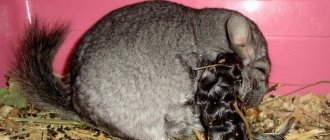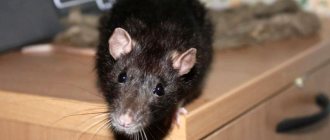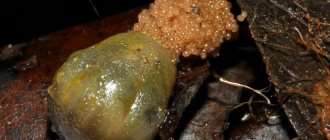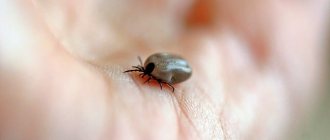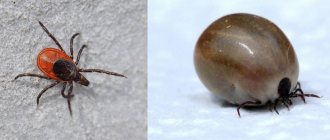Decorative rats have become popular pets in many families; adults and children become deeply attached to these intelligent animals. Often people acquire a couple of rodents of different sexes, and the result of keeping them together is the pregnancy of the female domestic rat and, most often, a successful birth. Childbirth in rats is a serious physiological process in which the owner must maintain a balance between non-interference and readiness to come to the aid of his pet if necessary.
How do rats reproduce in the wild?
The animals are capable of mating throughout the year, but in natural conditions new offspring appear more often in spring and summer. This is due to many factors: air temperature, food availability, animal safety. In regions with cold climates, rats mate much less frequently than inhabitants of southern countries.
Sexual maturity in these rodents occurs at the age of 5 weeks, although their body continues to develop up to 11 months. A rat's estrus lasts from 12 hours to 1.5 days, and during this time it mates with several males.
Pairing
During pregnancy, the female carefully arranges the nest using twigs, grass, and leaves. Creates a supply of food that will be needed for sustenance immediately after childbirth. Fathers of future babies do not take part in preparing for the birth of their offspring.
Childbirth occurs approximately 21–23 days after mating. The number of newborns depends on the age of the mother. The older the rat, the more fertile it is.
The babies are born blind, deaf and without hair, weighing about 5 g. Thanks to the mother's nutritious milk, the pups grow quickly and by the end of the first month they become completely independent.
A day or two after giving birth, the rat is again ready to mate. Therefore, often the still lactating female is already pregnant again.
Unique Fertility
In the Russian Federation the following types are most often found:
- Gray or pasyuk;
- Black;
- Turkestan (red).
Pasyuk Black rat Turkestan rat
One can only wonder why nature awarded rats with such amazingly productive fertility. They live and breed all over the world, not paying attention to either cold or hot climates, and their activity lasts all round. And only unforeseen natural disasters or any mass diseases can temporarily reduce their numbers.
Scientists believe that it was humans who contributed to changes in the behavior and survival of rats. Living next to a person, eating the products that he produces, these rodents live freely and comfortably. After all, food is always available, and all the traps prepared by people can be avoided. And if one rat was poisoned, the others will no longer approach such food. These animals have a fairly high intelligence. It is assumed that they have the makings of abstract thinking, which helps them navigate and stay alive in an unfamiliar place. All these skills are adopted by subsequent generations.
And considering how rats reproduce, all that remains is to start fighting them in time, because their activity in this case can take on catastrophic proportions.
Rats mating
At home, to avoid uncontrolled reproduction, it is better to keep animals of different sexes in separate cages. Only when a rat is in heat is a male placed next to it. For reliable results, they can be left together for 10–16 days.
These rodents do not have vaginal bleeding during estrus, so you can understand that the female is ready for mating by her behavior:
- The animal becomes restless, shakes its ears, and moves chaotically around the cage.
- When stroking the spine area, the rodent begins to arch its back.
- Mucous discharge appears from the genitals.
In front of the male, the rat can perform a kind of dance: spin in place, stretch out its hind legs, arch its back, imitating actions during mating.
Mating occurs mainly in the evening or at night, since the animal in nature leads a twilight lifestyle. The mating is repeated several times with a break for food, games, and grooming each other's fur.
After pregnancy occurs, the male should be transplanted into his own cage.
Lifestyle
Elephants are considered the largest animals that can be found on land. These giants belong to the class of mammals and are very social animals. Their natural habitat is Southeast Asia and Africa.
Elephants live in families, and complete matriarchy reigns in families, and males are expelled from the herd at a young age (or they leave on their own). Adult males live solitary lives and approach the family only to mate with a mature female. An elephant family consists of the eldest elephant, her daughters (with children) and other female relatives.
By nature, elephants are nomads. It is the eldest female who leads her family in search of food, and she decides where to go, where and how long to rest.
These huge animals are very sociable and enjoy communicating with their own kind. Tactile contact plays a huge role in the life of giants. They touch each other with their trunks, stroke them as a sign of greeting, the older ones kick the younger ones as punishment
Members of the same family treat each other with great care; special care and attention is given to a sick or dying elephant
The question of how long pregnancy lasts in elephants has long remained controversial in scientific circles. But today, thanks to the observations, research and documentation of zoologists, much is known about the pregnancy period, childbirth and subsequent care of the baby of these powerful herbivores.
Signs of approaching labor
For a comfortable birth and calm care of the babies, the rat needs to prepare a separate cage where no one will disturb it. It is better to transplant a pregnant female a couple of weeks before giving birth, so that she has time to prepare the nest and get used to the new territory.
You can understand that the deadline is approaching by the behavior of the animal. He becomes aggressive, takes food from his relatives, and frees up the space he likes for himself. The rat begins to arrange the place where the babies will be born. A few hours before giving birth, mucus drains from the vulva.
Pregnancy and childbirth
While bearing offspring, the female needs to be provided with rest and increased nutrition, and try to pick her up less often.
How long does pregnancy last?
How long a rat will carry pups depends on several factors:
- Number of fruits. The fewer babies are born, the shorter the gestation period. Most rodents give birth 21 days after mating. In case of multiple pregnancy - on day 25–26.
- If the female becomes pregnant a few days after giving birth, then the gestation period for new offspring increases to 30–34 days.
Pregnant
If the deadline has already passed or the rat’s behavior is causing concern, then you need to consult a specialist and not hope that everything will return to normal on its own.
Duration of labor
It is impossible to predict how long it will take for a particular rat to give birth. The birth of offspring usually occurs at night and lasts on average about two hours. This is a painful process for the female, so it is better not to disturb her.
When the baby is ready to be born, the mother sits on the sacrum and helps him with her teeth and paws. Babies are born in the amniotic sac, which the female ruptures and gnaws through the umbilical cord. Cubs are born at intervals of 3–5 minutes.
How many pups does a rat give birth to at one time?
The number of cubs in the litter depends on the age of the female, the breed of the rat, and how many times she has given birth before. Either 1 baby or more than 20 can be born. On average, their number is 10–12 at a time. Older and more experienced rodents produce larger offspring.
Many newborn rat pups become a problem for the mother, since she has only 12 nipples. Here the owner will have to come to the rescue.
Types of breeding
In domestic rats, two types of crossbreeding are possible: selection of different breeds and purebred breeding.
In turn, purebred crossing is divided into the following types:
- Linear crossing;
- Inbreeding;
- Outcrossing;
- Outbreeding.
Linebreeding
Linebreeding or line breeding of rats involves crossing individuals that have a common ancestor. This method allows you to obtain viable offspring with a good genotype. In this case, homozygosity is preserved, and characteristics that do not satisfy the breeder are leveled out.
Inbreeding
To consolidate important breed qualities, the inbreeding method is chosen. Breeding rats in this way involves studying the gene pool and selecting quality sires among close relatives. With close inbreeding, a decrease in the number of viable offspring is possible - so-called inbreeding depression. To reduce the risk of such a situation, individuals for breeding are selected according to strict criteria.
Outcrossing
Outcrossing is used when it is necessary to increase the number of litters with valuable qualities. Mating uses individuals obtained by linebreeding, but without common ancestors in the fourth or fifth generation. To improve the breed, young animals that are unsuitable for a good genetic line are removed from the litter.
Outbreeding
To improve the quality of the breed and the health of the litter, outbreeding is the best option. With such crossing, individuals of a pure breed are selected, but without common ancestors. The disadvantage of this method of breeding is that there is a risk of unplanned characteristics and with frequent use, after several generations the proportions of the animal change.
Despite the different selection options that can be combined, there is still an unpredictable result. This is manifested in the color and length of the coat, the number of individuals in one litter, eye color, and level of health.
Factors affecting reproduction
In the wild, the number of times a rat gives birth per year is influenced by climatic conditions, availability of food in the right quantities, natural disasters, and environmental conditions. We must not forget that natural selection allows only strong cubs to survive.
At home, despite the fact that rats are not so dependent on external factors, breeders try to limit the number of pregnancies, since frequent births affect the health of pets.
The birth of healthy rat pups and their number are influenced by the air temperature in the apartment, humidity, balanced nutrition, and stressful situations. Genetic factors also play a role. Spontaneous mutations and hidden recessions may occur.
Artificial feeding
In some cases, when the female dies after giving birth or refuses to breastfeed, you can try to feed the cubs to the child's family. Insulin syringes are used for this. Infant formula is taken in the proportion of 1 part to 50 ml of condensed milk with a high fat content of up to 12%, including half a tablet of calcium gluconate. It is acceptable to use milk replacers for cats or dogs.
Feeding should be done frequently with gradually increasing portions. It is preferable to give such cubs to another lactating female if she accepts them.
In conclusion, it should be said that breeding rats is quite a fascinating process, but do not forget that by crossing different species you can create something completely unusual.
Rat breeding
Decorative species of rats reproduce well at home. However, to obtain healthy, viable offspring, it is necessary to have at least basic knowledge about the biological characteristics of pets, the rules of feeding and keeping pregnant females and cubs.
Very often, only one animal is kept in the house as a four-legged friend and, even when having a couple of animals, as a rule, they do not set themselves the task of breeding them. Nevertheless, not only children, but also adults love to observe the life of rats, the birth and raising of offspring.
At home, white and colored varieties of rats are able to reproduce all year round.
However, breeding these animals in captivity requires certain conditions, although it does not present any particular difficulties.
Breeding new breeds of rats can be quite an exciting hobby. As a result of selection, it was possible to obtain numerous breeds and varieties of rats, therefore, when mating animals, this circumstance should be taken into account in order to preserve the breed or independently create a new variety of these animals.
The owner of a rat who decides to have offspring from it must understand that his decision is quite serious. First of all, he needs to think carefully about where the future babies will be placed. The health status of the rat is important: it should not suffer from mycoplasma and many other diseases.
You should prepare in advance for the appearance of numerous offspring, which may consist of 10-17 babies. Naturally, few people plan to keep so many rapidly maturing rats in their home. Thus, it is necessary to either take care of their new home in advance, or give it to a pet store, taking into account that most of the animals are used as food for reptiles.
In general, rats reproduce very easily, but it should be remembered that in their environment there is usually such a thing as inbreeding. Thus, based on this, upon reaching sexual maturity of animals, that is, in the 5th week of life, females are separated from males from the same litter - brothers and sisters, as well as mothers from sons.
A great effect in breeding new species and breeds of rats can be achieved by paying attention to one of the main characteristics. But unfortunately, this can lead to a deterioration to a greater or lesser extent of other qualities. Therefore, you should stick to the golden mean, improving all the positive signs.
Most often, animals of the same breed are mated; this method is called “pure breeding.” It allows you to improve animals according to basic characteristics: color, length and density of fur, size, etc.
One of the forms of purebred breeding of decorative rats is breeding along lines and family groups. A line in this case is a group of animals that has a common ancestor male, and the successors of the line are the descendant males. For successful reproduction of animals along the line, males are selected with appropriate females similar to them in basic decorative or useful characteristics.
When creating a family group, both males and females are considered carriers of the main characteristics. This method allows you to quickly improve the line.
If it is decided to create a new variety, then animals of different breeds or lines are crossed. To do this, an individual with characteristic qualities is selected and mated with an animal that has similar necessary qualities, and the offspring with the appropriate characteristics are crossed again with the founder of the breed. This method of reproduction is called absorption crossing.
Mating of close relatives is called inbreeding. Rats mate quite easily in various combinations: females and males of the same litter, descendants of the same male, etc., with the only exception being a pair of mother and son - they do not always begin to reproduce. Inbreeding is often used to create a pure line and enhance the outstanding qualities of sires in the offspring. However, with prolonged inbreeding, the offspring become less viable and ugly, since, as scientists believe, recessive genes appear in them.
Breeding rats for sale requires a large room, since it is impossible to keep a significant number of animals in a living room due to the specific smell of animals.
Moderate inbreeding with quick results at home can be achieved by matching one male with two females with the necessary qualities. To strengthen and consolidate the characteristics selected to create a new species, the best animals from one female are mated with the litter from another female or with their parents, and the young animals of the third litter are mated with the founders of the breed.
Share on the page
Next chapter >
It is important for those who keep rats to know everything about them.
Behavior of rats after birth
These rodents are very caring mothers. During the first two days after birth, you should not touch the rat, try to remove the cage, and especially not touch the babies. The female, no matter how calm she was before pregnancy, will defend the nest and may bite. In order not to lose contact, you can offer her her favorite treat through the cage and speak to her in a calm tone.
After some time, the babies definitely need to be examined, to check whether all the pups were born healthy, are well-fed, and are developing well. This should be done with medical gloves so as not to leave a human odor on your pets. In case of deviations, you should immediately consult with ratologists. To check the cubs, it is better to lure the mother out of the cage with a treat.
Offspring
Over time, when the babies begin to move, the rat's behavior should change, but some females remain aggressive until the litter is deposited.
Possible complications
Pregnancy of an ornamental animal rarely has complications, but if this happens, the mother and fetus are in serious danger. The fact is that owners rarely notice changes in the behavior of their pets, given their size and life in a closed cage. A late visit to the veterinarian often becomes fatal. So, what should you pay attention to if you know that your pet is currently experiencing pregnancy?
- the appearance of bloody discharge;
- to the absence of movement in the female’s abdomen, especially in the last stages;
- lethargy of the animal;
- long absence of labor.
In addition, not knowing how many rats give birth to rat pups at one time, owners often do not notice the stopped labor, which leads to sepsis and death.
Sometimes it happens that the offspring are destroyed by the mother rat herself. The reasons for this can be very different, but most often the culprit is the too early age of the individual participating in reproduction, the stress she received, or the lack of some substances in her diet. What to do if a rat gives birth, and you are afraid for the newborns? You will have to wait at least a month to pick them up.
After all the tests have been passed more than once, you will gain a lot of experience in the field of breeding ornamental rodents.
A ratologist is responsible for the health of rats. For questions regarding maintenance, treatment and other assistance, please contact tel. +7 (495) 669-31-09 (Moscow); (Saint Petersburg)
Ratologists work around the clock:
| Services | Prices |
| Ratologist is on call from 9.00 to 21.00 | 600rub |
| Ratologist is on call from 21.00 to 9.00 | 1200rub |
| Initial examination of the rat | from 500r |
| Cost of a doctor's consultation visit | up to 2000r |
| Average cost of a visit to provide medical care | from 2000 rub. up to 4000 rub. |
| Average cost of surgical procedures | 3000rub |
Please note that a ratologist’s visit consists of a Doctor’s Call, an Examination of the animal and Additional therapeutic measures.
Source
Development of baby rats by day
Newborn rat pups are like celluloid toys, as they are born completely without hair, blind and with closed ear canals. The only thing they can do well is suckle milk. Thanks to its nutritional value, the rapid development of rat pups begins from the third day. Their ears open and they can now hear sounds. On days 5–6, the skin becomes covered with spots and hair begins to appear. Babies become active at 8–10 days. They are already starting small fights over their mother's nipple.
When do baby rats open their eyes?
At about two weeks of age, particularly large rat pups open their eyes. The rest will catch up with them very quickly. By this time, babies have already acquired small teeth and are trying to feed on their own.
Mommy is going through a troublesome period. The cubs strive to explore the world around them, and the female constantly tries to gather them into the nest, saving them from imaginary dangers.
When can you pick up baby rats?
The human scent on newborn rat pups can cause the mother to eat them, so it is not advisable to touch them.
At the beginning of the third week, you can safely begin to accustom the babies to hands, if the female does not show aggression. Otherwise, it is better to wait a few more days so that the rat stops protecting its offspring so zealously.
When should young animals be transplanted?
Although pet stores sell decorative rats from 3 weeks of age, there is no need to rush into this. In this case, they grow up weaker and get sick more often.
The brood is hatched at approximately 26–28 days, sorting the pups by sex.
Preparatory stage
If you want to get healthy, strong and viable offspring, then pay great attention to the choice of future parents. It is known that a male or female with chronic diseases is less likely to have completely healthy cubs. Therefore, it is better to select a partner from trusted breeders or nurseries and ask them for all the necessary documentation.
Individuals that have reached the age of 4 months and do not have external health problems are suitable for reproduction. This means that the condition of the animal’s teeth, eyes and fur must be impeccable. After the third year of life, the male and female drop out of the category of possible parents.
It is advisable that the breeding of the decorative rat take place in a separate room. With a large offspring, their living in a living room becomes almost impossible. At a minimum, provide the female with a separate cage or spacious box during pregnancy, with a constant flow of fresh air and sunlight.
